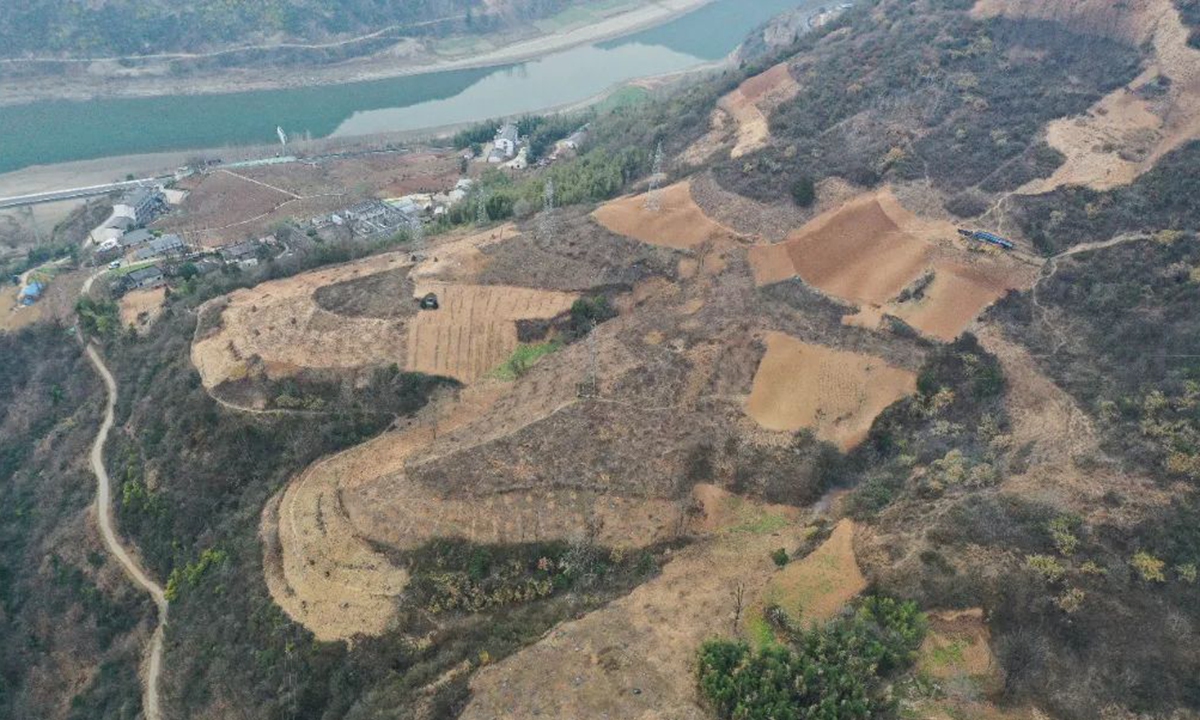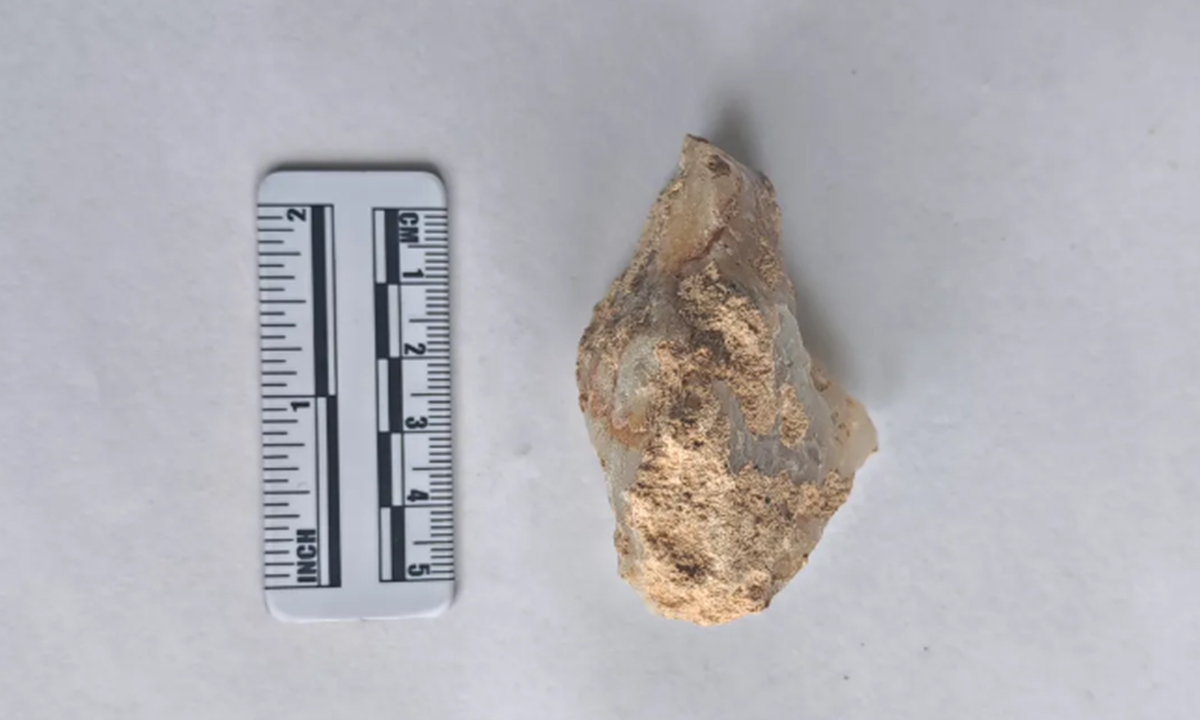
The Dongqin village site in Shiyan, Central China's Hubei Province Photo: Courtesy of the Hubei Cultural Heritage Bureau
A new Paleolithic site has been discovered in Shiyan, Central China's Hubei Province, the Hubei Cultural Heritage Bureau announced on Tuesday.
Since Shiyan sits on a treasure trove of relics related to their origins, evolution and development of mankind, experts say the discovery could answer more questions about the history of humanity in China.
According to preliminary judgments, the site may have been a slaughterhouse or the main living area of early human beings, which is of great significance to the study of ancient human's living environment and production approaches.
The Dongqin village site is located in the northwest of Dongqin village in Shiyan. It sits on a second-middle-level terrace on the south bank of the Duhe River at an altitude of about 385 meters.
A large number of stone tools and mammal fossils were found at the site. Many of the various stone tools were well preserved. The tools were mainly made from quartz and vein quartz.
The types of stone tools include stone cores, scrapers, pickaxes and pointed tools, showing obvious traces of production and utilization.
These traces not only show the level of tool production of ancient people, but also reflect the development and utilization of resources.
Yet the Dongqin site is not the only site in Shiyan. The Xuetang Liangzi site is famous for the milestone discovery of two hominid crania, one in 1989 and the other in 1990.

A scraper collected at the Dongqin site in Shiyan Photo: Courtesy of the Hubei Cultural Heritage Bureau
The city also has Paleolithic fossil sites. The three fossils were unearthed at the Xuetang Liangzi site and dated to approximately 1 million years ago. One of the skulls of Yunxian Man is considered the best-preserved hominin cranium found on the Eurasian continent.
Fang Qi, head of the archaeological excavation team and dean of the School of Archaeology at Jilin University, told the Global Times on Tuesday that the Dongqin village site findings have not undergone laboratory research.
As the two sites are only about 140 kilometers from each other, Fang said the findings at the Dongqin village site might somehow be related to Yunxian Man.
"They might have lived in the same era or have communicated with each other. Of course, there is also the possibility that one succeeded the other," he noted. "It is expected that even more and more significant findings will be discovered in the next few months."
As the first tributary of the Hanjiang River, the Duhe River is closely tied culturally to the Hanjiang River, which is the largest tributary of the Yangtze River. The newly discovered Dongqin village site was most likely an important link in the entire Hanjiang River and the Duhe River basin's ancient human survival and development chain.
He Cunding, a professor from the School of Cultural Heritage at Northwest University in Xi'an, Shaanxi Province, told the Global Times that the cultural relics census has definitely brought in more expertise and increased efforts in archaeological work.
"With these stepped-up efforts, more key findings are expected. And with systematic excavation, the chain of ancient human survival and development can be linked more closely," said He.
The discovery was made during the fourth national cultural relics census, a nationwide campaign to safeguard the country's rich cultural heritage.





